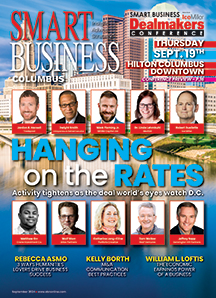For most of us, annual employee evaluations — regardless of which side of the desk you’re on — are a low point on the calendar year. I recall the anxiety I used to feel before every performance review. It seemed like my boss had to find at least one or two negatives to go along with the litany of positive feedback he gave me. The process was always disheartening and never truly helpful.
It wasn’t until I reported to a great boss that I understood performance reviews don’t need to be painful!
There are a number of problems with the way most companies handle yearlyevaluations, and some argue for doing away with them altogether. As our office environments have changed over the years, our employee evaluation methods haven’t kept step with those changes. Whether you think evaluations need to be dispensed with or just revamped, it’s high time we reevaluate how we evaluate.
One of the opportunities for improving the evaluation system isn’t the system itself, but the fact that many managers fundamentally believe their employees aren’t trying hard enough. As a result, they look for and even create criticisms when it comes time for performance reviews. What managers need to realize is that poor performance is rarely a choice. More often, it’s the consequence of various factors, including lack of competency, unclear goals and changing work priorities or strategies. In most cases, these factors can be addressed with the right amount of attention from both the manager and the employee. In less than one percent of cases are employees intentionally performing poorly.
As for how to improve the evaluation system itself, I learned a lot from that great boss of mine. He helped me lose my fear of performance reviews through his actions. For starters, he trusted me to do my best. He also checked-in with me regularly when I was undertaking a new job, discussed how I was going to accomplish the job before I started, problem solved with me when necessary, asked my opinion and suggested possibilities for approaching tough assignments. He believed in me and he believed that on any given day, I was giving my best effort. In every interaction, he demonstrated trust and respect. Because of his frequent feedback, I never had to fear my annual performance reviews – I knew daily how he evaluated my performance.
When it came time for my annual reviews, I completed the evaluation form and then we discussed it together. We always identified career and growth opportunities for me to focus on. Yes, there were times when he was disappointed with my performance, but his response was to actively help me improve by working with me to clarify or reprioritize goals, build needed competencies and remove barriers.
As you re-evaluate how you evaluate, consider what behaviors you’re projecting to the people who report to you.
THE EXPERIMENT:
Think about some measures you can institute now to begin changing the way in which staff is evaluated.
Here are a few ideas:
- How can you establish early on which performance metrics are important? Could you meet with employees at the outset to discuss what you each see as the key elements of their jobs and the markers of success?
- How could you have candid conversations with staff about their individual goals? Experiment with ways in which you can help them reach their own performance goals while meeting the company’s goals at the same time.
- Make it a priority to schedule bi-weekly or monthly one-on-one conversations in which you ask for their views and share your views about performance. The emphasis is on the word “conversation.” Seek to create a natural dialogue in which both parties share their thoughts.
How could you give more feedback in the moment? When a job is well done or needs improvement, be sure to give your praise or advice then and there. Remember to try and give six positives to every one constructive comment.
THE CONVERSATION:
Share the results of your experiment in the comments below or contact the author directly at [email protected].
DONNA RAE SMITH is a guest blogger for Smart Business. She has forged a career, enterprise and an applied discipline on the practice of teaching leaders to be masters of change. She is the Founder and CEO of Bright Side Inc., a transformational change catalyst company with an emphasis on the behavior-side of change. For more than two decades, Donna Rae Smith and the Bright Side team have been recognized as innovators in executing behavioral strategies coalesced with business strategies to accelerate and sustain business results. Bright Side®, The Behavioral Strategy Company, has partnered with over 250 of the world’s most influential companies. For more information, please visit www.bright-side.com or contact Donna Rae at [email protected].

